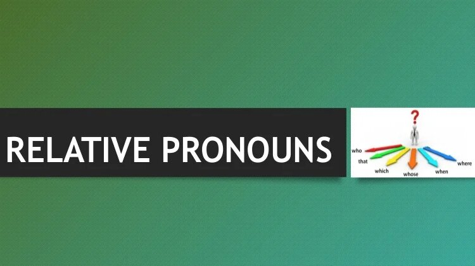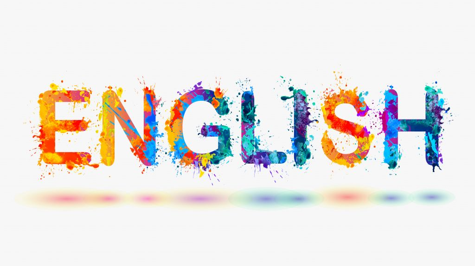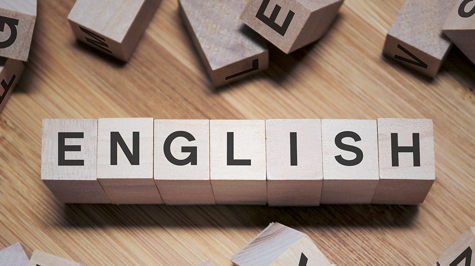Relative pronouns play a crucial role in connecting different parts of a sentence, particularly when providing additional information about a noun or pronoun. They act as the bridge that links a dependent clause to a main clause. In English, the most commonly used relative pronouns are "who," "which," and "that." Understanding the usage and nuances of these pronouns is essential for constructing clear and coherent sentences. In this article, we will explore the functions of these relative pronouns and provide examples to illustrate their usage.
1. Who
The relative pronoun "who" is used to refer to people or occasionally to animals with human-like qualities. It is generally used as the subject of a verb within a relative clause. Let's look at some examples:
- The woman who lives next door is a doctor.
- The students who attended the lecture were impressed.
- I have a friend who is an excellent photographer.
In each of these sentences, "who" introduces a relative clause that provides additional information about the noun preceding it. The relative clause describes the woman, the students, and the friend, respectively.
"Who" can also be used as the object of a verb or a preposition within a relative clause. Consider the following examples:
- The manager, who I respect greatly, has decided to retire.
- The dog, who they adopted from a shelter, is very friendly.
- The artist, who I recently met, has a unique style.
In these sentences, "who" is used to provide additional information about the manager, the dog, and the artist. The relative clause gives more detail about the noun preceding "who."
2. Which
The relative pronoun "which" is used to refer to animals or inanimate objects. It is used to introduce relative clauses that provide additional information about the noun or pronoun preceding it. Unlike "who," "which" is used for both the subject and the object of a verb within a relative clause. Let's examine some examples:
- The book, which I borrowed from the library, was fascinating.
- The car, which he bought last year, is a hybrid.
- The company, which has been in business for decades, recently expanded its operations.
In each of these sentences, "which" introduces a relative clause that provides more information about the book, the car, and the company, respectively.
"Which" can also be used to introduce non-defining relative clauses. These clauses provide additional, non-essential information about a noun or pronoun. Non-defining relative clauses are set off by commas. Consider the following examples:
- The Statue of Liberty, which was a gift from France, is an iconic symbol of freedom.
- The Grand Canyon, which is located in Arizona, attracts millions of tourists every year.
In these examples, the relative clauses introduced by "which" offer additional information about the Statue of Liberty and the Grand Canyon. It is important to note that the information within non-defining relative clauses is not necessary for understanding the main clause.
3. That
The relative pronoun "that" can be used to refer to both people and things. It is less formal compared to "who" and "which" and is often used in restrictive relative clauses. These clauses provide essential information about a noun or pronoun, and they are not set off by commas. Let's examine some examples:
- The car that is parked outside belongs to my brother.
- The book that I am reading is a bestseller.
- The man that you met at the party is my uncle.
In each of these sentences, "that" introduces a restrictive relative clause that provides necessary information about the car, the book, and the man, respectively.
Unlike "who" and "which," "that" is not typically used to introduce non-defining relative clauses. Its usage is generally limited to defining or restrictive relative clauses.
"that" can also be used as the object of a verb or a preposition within a relative clause. Consider the following examples:
- The dog that they adopted from the shelter is very friendly.
- The project that we are working on requires careful planning.
- The house that she grew up in has been renovated.
In these sentences, "that" is used to provide additional information about the dog, the project, and the house. The relative clause adds more detail to the noun preceding "that."
It is worth noting that in some cases, "who" can be used interchangeably with "that" when referring to people. For example:
- The girl who/that won the competition is my sister.
- The doctor who/that treated me was very knowledgeable.
In these sentences, both "who" and "that" are acceptable, providing flexibility in sentence construction.
Summary
Relative pronouns, such as "who," "which," and "that," are essential for connecting different parts of a sentence and providing additional information about a noun or pronoun. "Who" is used to refer to people and occasionally animals with human-like qualities. It is generally used as the subject of a verb within a relative clause. "Which" is used to refer to animals or inanimate objects, and it can be used as both the subject and the object of a verb within a relative clause. "That" is used to refer to both people and things, and it is commonly used in restrictive relative clauses. It is less formal compared to "who" and "which." While "that" is not typically used in non-defining relative clauses, it can be used interchangeably with "who" when referring to people in some cases.
Understanding the distinctions between these relative pronouns is crucial for constructing clear and grammatically correct sentences. By employing these pronouns effectively, writers can provide additional information and add depth to their writing. So, the next time you find yourself in need of connecting clauses and providing further details, remember the power of "who," "which," and "that" as your trusty relative pronouns.





